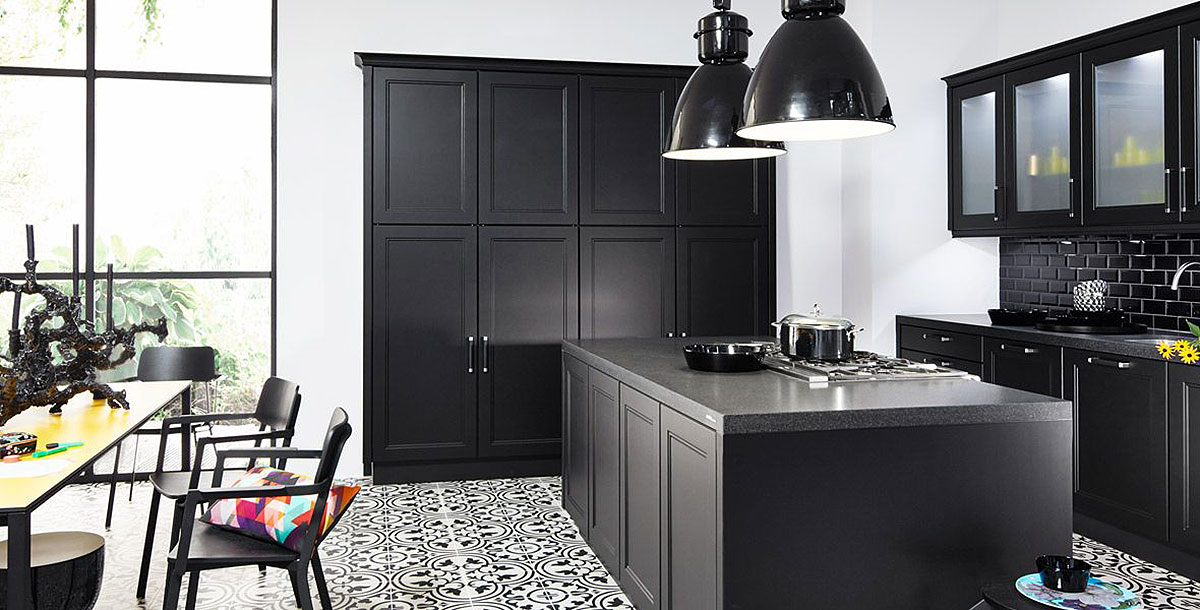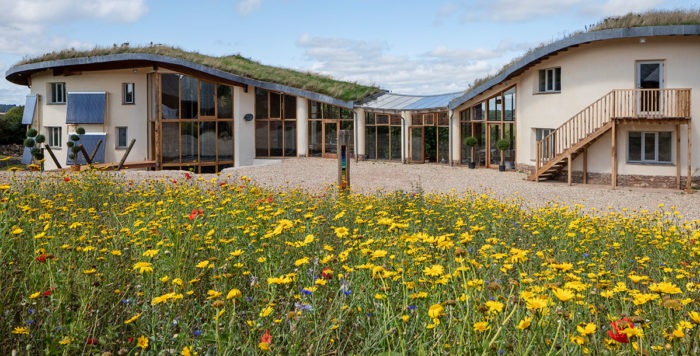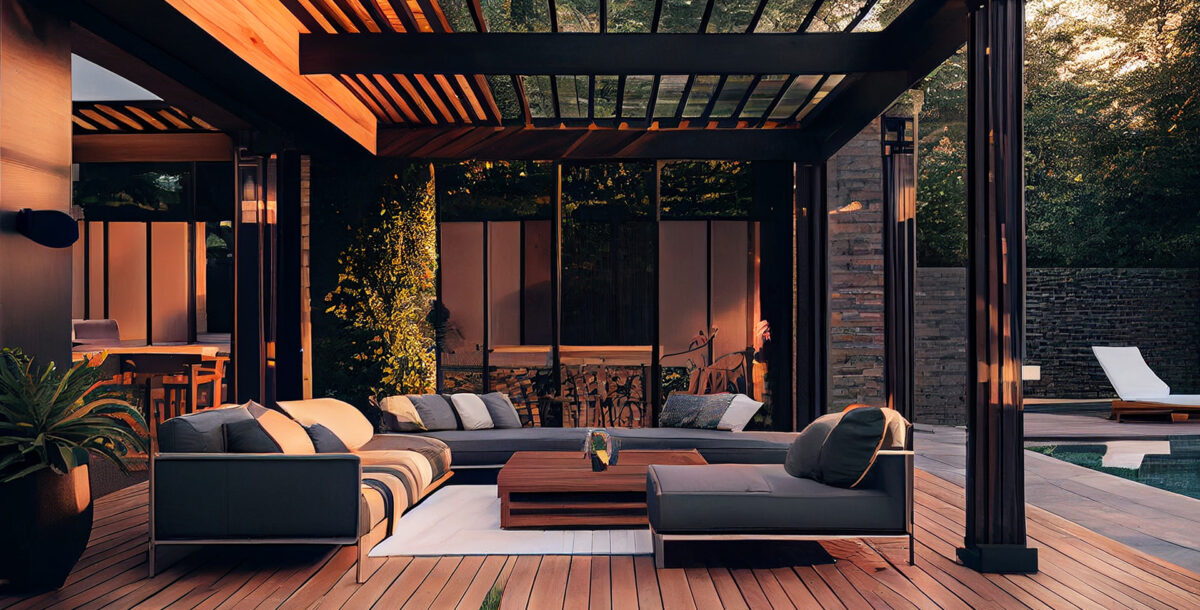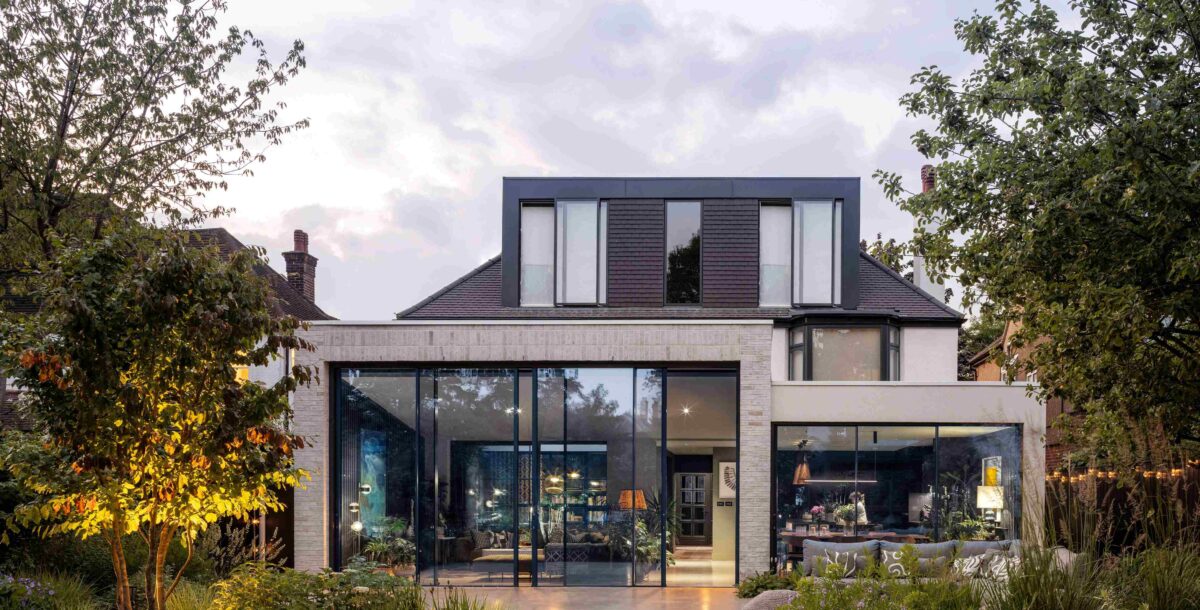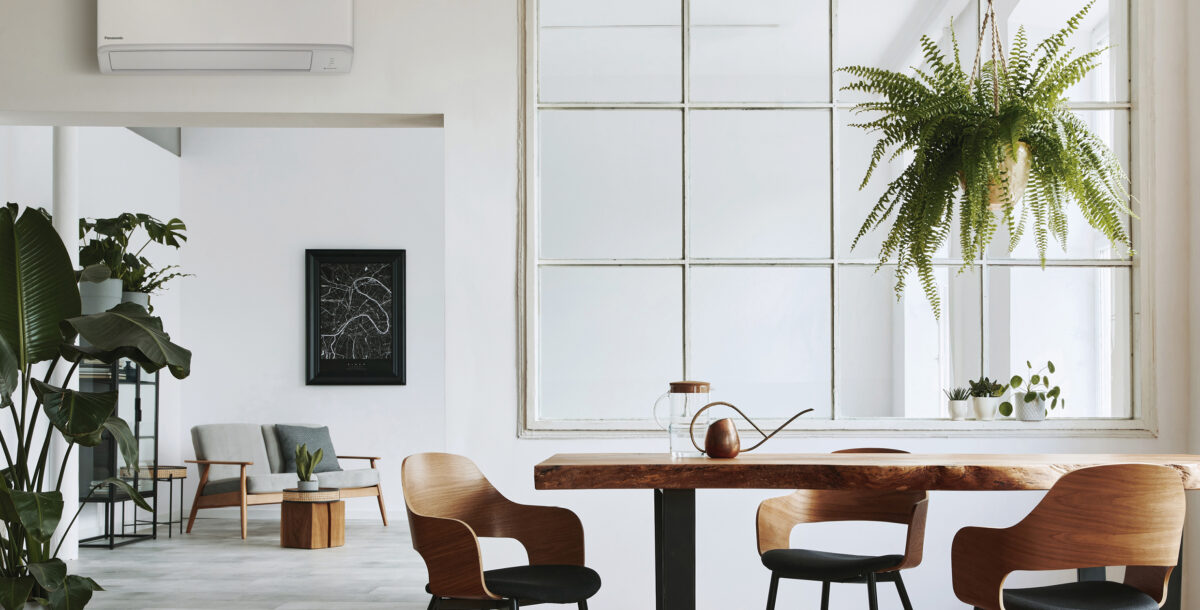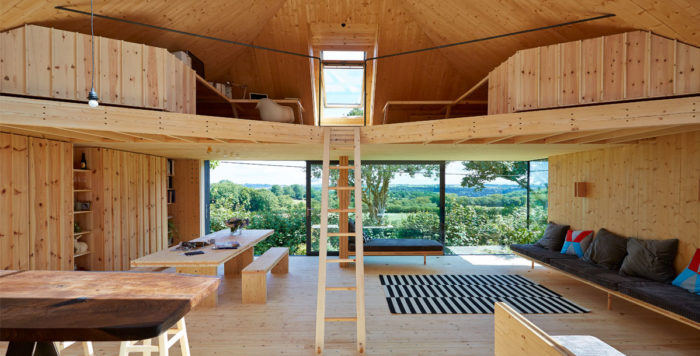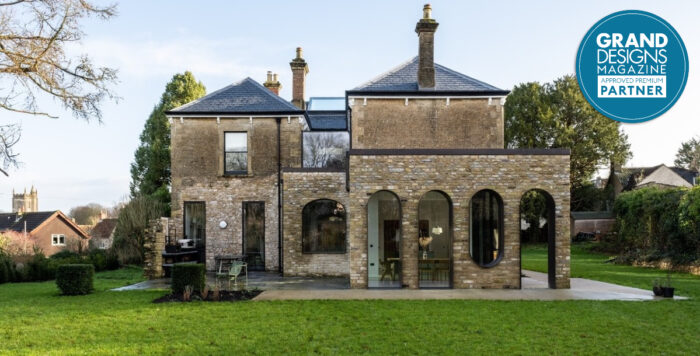How to design a kitchen space for entertaining
Incorporate a space for intimate dinners, casual get-togethers or parties
Getting your kitchen design and layout is essential – whether you want to incorporate a space for intimate dinners, casual get-togethers or impressive parties.
No longer just spaces to prepare food, kitchens have replaced formal dining rooms as the place to catch up with friends and family. However, turning a kitchen into a multi-use area requires different considerations than for one that’s in a separate room. You’ll need to design a layout that makes the best use of space and choose the elements with care.
Zone your space
Regardless of its size, the key to making your kitchen work for entertaining is to consider how people will move around it. As well as thinking about where and how you’ll be cooking, you need to plan where to serve food and if you want your guests to gather around a breakfast bar, sit at a table or make use of more casual seating.
An island or peninsula can double as a visual divide within an open-plan concept, allowing the chef to talk to guests while preventing them wandering into the food-preparation zone.
However, there are other ways of subtly dividing a room without a physical barrier. For example, a change in colour or material defines an area as separate, as will different counter heights.
Within your workspace, ensure that it remains practical as well as sociable and that it avoids narrow passing places. ‘Consider the position of your sink, oven and fridge,’ says Jonathan Turner, interior and kitchen designer with Bryan Turner Kitchen Furniture. ‘There should be a clear pathway between these three appliances to make preparing meals more efficient and also give the room a natural flow. Islands are perfect places for your sink or hob, eliminating the need for cooks to prepare dishes with their backs to people.’
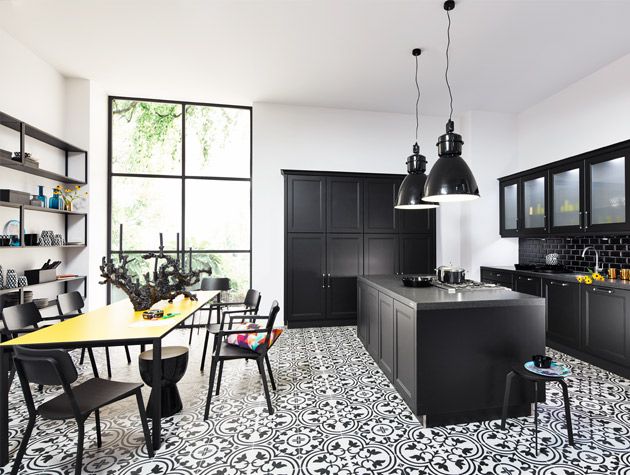
Photo: Nolte
Practical Dining
There are several ways to include a place for guests to sit or dine, depending on the sort of entertaining you prefer. If you often have big parties, a table and chairs may be the best option, as they can be moved around or removed altogether. ‘Alternatively, a conjoined arrangement, which can be integrated into an island, is perfect for both daily use and entertaining,’ says Turner.
‘The shape is important, though. Linear designs emphasise the proportions of a room, while round or oval shapes tend to be more effective at encouraging conversation.’
If storage is limited, banquette seating can accommodate more guests and the space below can be used to house lesser-used items.
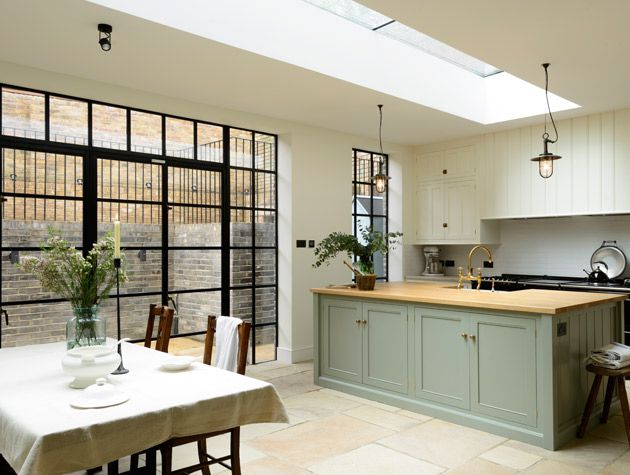
Photo: deVOL
Invest in smart storage
In a kitchen where cooking, dining, living and entertaining will all happen, clever design can prevent the work area from becoming cluttered. ‘Keep functional things, such as sinks, dishwashers and laundry out of view, but position the hob and preparation areas so the cook can be engaged in socialising as well,’ advises Jane Stewart, design director at Mowlem & Co.
‘Conversely, place glassware, cutlery and china, plus wine racks or coolers and beverage fridges near the dining area, so the cook’s help can set up and serve without getting in the way.’
Integral storage solutions work well in a space with multiple uses. Pull-out racks, dividers and drawers within larger drawers are ideal for keeping everything organised, while other elements can be disguised and then revealed when required.
Everyday items and ovens can be hidden away with pocket doors, then opened up and made a feature of with the covers out of sight,’ says Richard Davonport, MD at Davonport.
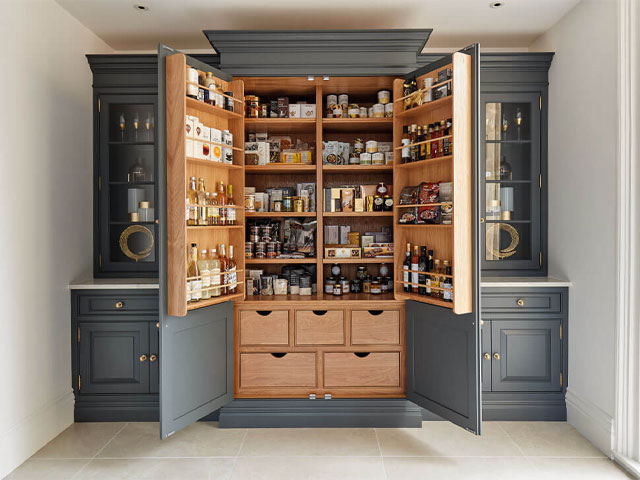
Photo: Tom Howley
Choosing Appliances
No one likes to be surrounded by lingering cooking smells or having to talk over an overzealous dishwasher, so finding appliances that emit minimal noise is a must.
‘Choose an extractor that operates below normal conversation levels, which is 59dB, and will continue working for 10 minutes after cooking has finished, to remove unwanted vapours,’ says Doug Haswell, furniture manager at Caple.
Beyond minimising disruption, it’s a good idea to look for appliances that will make entertaining easier. Warming drawers, for example, will help keep dishes hot while others finish cooking, and a pair of dishwashers means one can be running while the other is loaded.
More than one oven is useful if you often cater for a crowd, while coffee machines and hot-water taps are great time-savers for after-dinner drinks.
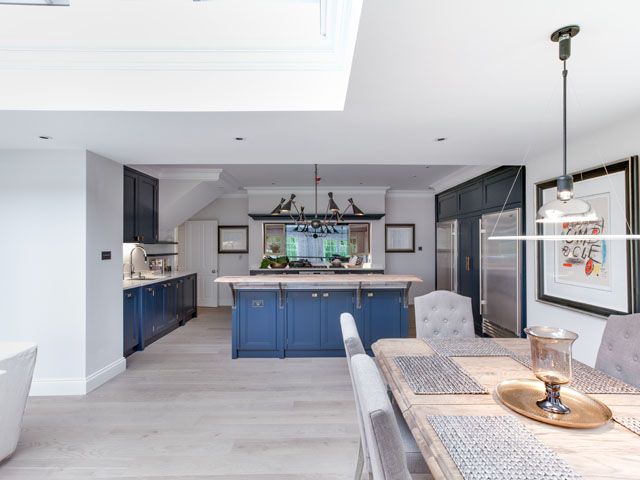
Photo: Mark Taylor Design
Pick practical surfaces
Your choice of materials will have an impact on the ambience of the room, as well as its practicality. It’s worth remembering that what makes a good kitchen surface around your hob or sink won’t necessarily be the best for an adjoining breakfast bar or island.
‘There’s a wealth of new composite and ceramic worksurfaces that are amazingly durable and resistant to staining,’ says Jonathan Turner.
‘Aesthetically, careful consideration of materials can elevate a kitchen to a stylish entertaining space,’ he adds. ‘Sometimes, it’s better to use warmer surfaces, such as wood, in conjoined tables or breakfast bars, as it’s more comfortable than cold, hard granite if you’re leaning on it. Natural surfaces can also make the room feel more inviting.’
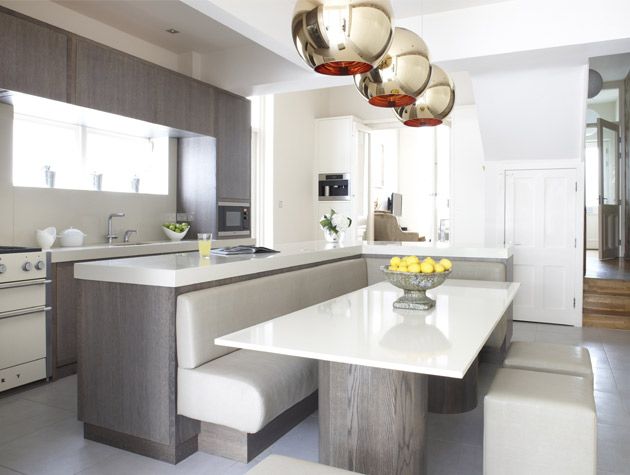
Photo: Chamber Furniture

